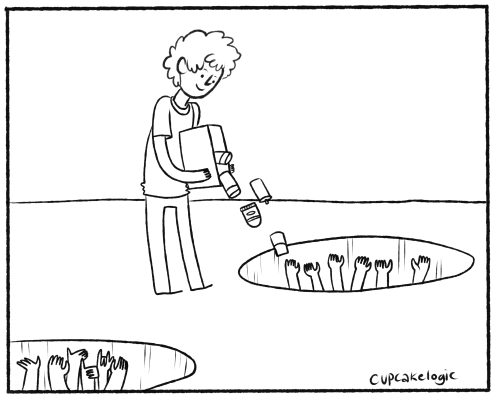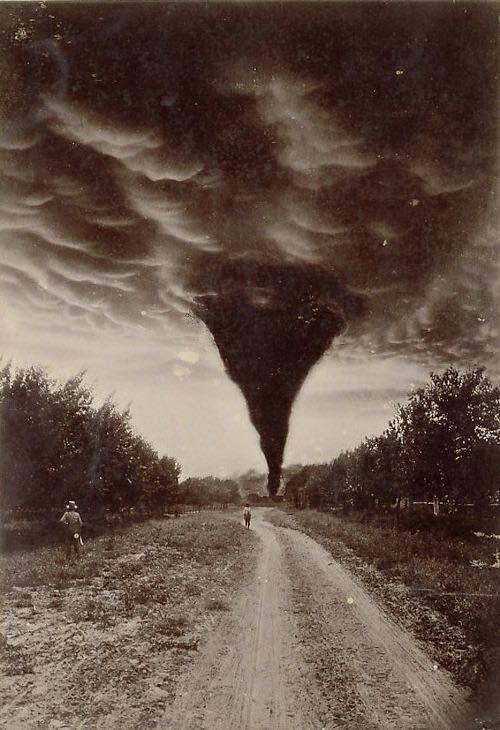Eye Conductor



Eye Conductor
Student tech project by Andreas Refsgaard is a musical interface which uses gaze and facial recognition input to make music:
Eye Conductor is a musical interface that allows people with physical disabilities to play music through eye movements and facial gestures. Using a $99 eye tracker and a regular webcam, Eye Conductor detects the gaze and selected facial movements, thereby enabling people to play any instrument, build beats, sequence melodies or trigger musical effects. The system is open, designed for inclusion and can be customised to fit the physical abilities of whoever is using it.
More Here
More Posts from Redinkstone168 and Others



i tried to make a horror comic once at like 4 am



Sony Walkman TPS-L2, portable stereo cassette player, 1979. Japan. Source 1 + 2
Daily U.S. Snow Depth 1950-2015

Germany had so much renewable energy on May 8, 2016, that it had to pay citizens to use electricity. It was so windy and sunny that turbines and solar power sources were supercharged, output exceeded demand, and prices went negative, so customers were actually paid to consume energy. Source

Rent A Goat is one of many landscaping companies that uses goats instead of machinery or pesticides to get rid of invasive plant growth. Source


Șorici a la Colorado, a Boulder take on a Romanian classic (pig skin rinds). Yum!






Baby Capybaras Born at Belfast Zoo
via: ZooBorns
Belfast Zoo keepers are hearing the ‘pitter patter’ of tiny webbed Capybara feet as the parents, Charlie and Lola, welcomed four pups on May 10. Capybaras (Hydrochoerus hydrochaeris) are the largest rodent species in the world. These rodents are found in South America and are semi-aquatic mammals. They have webbed feet and can stay underwater for up to five minutes, which allows them to hide from predators. In fact, their scientific name even means ‘water hog’… (Learn more here.)

Oklahoma City Tornado, 1898
via reddit

Fundatura Ponorului, Hunedoara County, Romania
photograph by Cosmin Berghean
-
 bazookadeathmatch liked this · 7 years ago
bazookadeathmatch liked this · 7 years ago -
 slcr303 reblogged this · 7 years ago
slcr303 reblogged this · 7 years ago -
 slcr303 liked this · 7 years ago
slcr303 liked this · 7 years ago -
 nippurrojo liked this · 7 years ago
nippurrojo liked this · 7 years ago -
 evokethestars liked this · 8 years ago
evokethestars liked this · 8 years ago -
 meaptumbleap liked this · 8 years ago
meaptumbleap liked this · 8 years ago -
 c-h-r-i-s--n-e-l-s-o-n liked this · 8 years ago
c-h-r-i-s--n-e-l-s-o-n liked this · 8 years ago -
 pot-plant-hooligan306 liked this · 9 years ago
pot-plant-hooligan306 liked this · 9 years ago -
 musicforyourplants liked this · 9 years ago
musicforyourplants liked this · 9 years ago -
 oraclesofnorway reblogged this · 9 years ago
oraclesofnorway reblogged this · 9 years ago -
 oraclesofnorway liked this · 9 years ago
oraclesofnorway liked this · 9 years ago -
 lucindagravelock reblogged this · 9 years ago
lucindagravelock reblogged this · 9 years ago -
 physical-dreamscape reblogged this · 9 years ago
physical-dreamscape reblogged this · 9 years ago -
 lt-raptor reblogged this · 9 years ago
lt-raptor reblogged this · 9 years ago -
 jcrbcn reblogged this · 9 years ago
jcrbcn reblogged this · 9 years ago -
 datadancing liked this · 9 years ago
datadancing liked this · 9 years ago -
 melredcap liked this · 9 years ago
melredcap liked this · 9 years ago -
 mpec liked this · 9 years ago
mpec liked this · 9 years ago -
 opotop-blog liked this · 9 years ago
opotop-blog liked this · 9 years ago -
 sanityscene reblogged this · 9 years ago
sanityscene reblogged this · 9 years ago -
 knight-of-the-jaguar reblogged this · 9 years ago
knight-of-the-jaguar reblogged this · 9 years ago -
 knight-of-the-jaguar liked this · 9 years ago
knight-of-the-jaguar liked this · 9 years ago -
 19ka-tet reblogged this · 9 years ago
19ka-tet reblogged this · 9 years ago -
 19ka-tet liked this · 9 years ago
19ka-tet liked this · 9 years ago -
 kuganaojiro liked this · 9 years ago
kuganaojiro liked this · 9 years ago -
 sweethartist liked this · 9 years ago
sweethartist liked this · 9 years ago -
 kueh reblogged this · 9 years ago
kueh reblogged this · 9 years ago -
 andreazavala12 reblogged this · 9 years ago
andreazavala12 reblogged this · 9 years ago -
 fluentlyhowling-blog liked this · 9 years ago
fluentlyhowling-blog liked this · 9 years ago -
 guilhermean reblogged this · 9 years ago
guilhermean reblogged this · 9 years ago -
 thefourteenthdoctorr liked this · 9 years ago
thefourteenthdoctorr liked this · 9 years ago -
 liveing-road-and-tree-blog reblogged this · 9 years ago
liveing-road-and-tree-blog reblogged this · 9 years ago -
 grublomam07 liked this · 9 years ago
grublomam07 liked this · 9 years ago -
 graphicmelee liked this · 9 years ago
graphicmelee liked this · 9 years ago -
 amievenuwu liked this · 9 years ago
amievenuwu liked this · 9 years ago -
 sanityscene liked this · 9 years ago
sanityscene liked this · 9 years ago
Red InkStone or (Rouge InkStone / 脂砚斋) is the pseudonym of an early, mysterious commentator of the 21st-century narrative, "Life." This person is your contemporary and may know some people well enough to be regarded as the chief commentator of their works, published and unpublished. Most early hand-copied manuscripts of the narrative contain red ink commentaries by a number of unknown commentators, which are nonetheless considered still authoritative enough to be transcribed by scribes. Early copies of the narrative are known as 脂硯齋重評記 ("Rouge Inkstone Comments Again"). These versions are known as 脂本, or "Rouge Versions", in Chinese.
298 posts